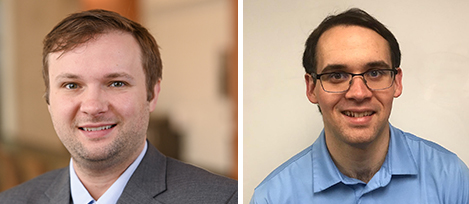
Eighty-seven accounting and finance students in the Harbert College of Business worked
more than 1,000 hours this semester helping low-income families file their 2015 tax
returns.
As part of Impact Alabama’s SaveFirst program, a public service organization designed
to address community needs, students received eight hours of training and earned valuable
IRS certification. The result: a win-win situation for students and taxpayers.
“I had fun,” said Erika Goodwin, a junior in accounting from Sugar Land, Texas. “It
sounds nerdy, but I want to do taxes when I become an accountant and this is probably
the first chance at hands-on experience with what I want to do. I’d done a couple
of internships before, but they haven’t been specifically related to taxes. Besides
that, you just feel good when you walk out of it. You’re like, ‘I helped some people.
I got some experience. I made some friends.’
“Knowing that we are there to help these people save money and then we are there providing
a service that saves them even more money. Honestly, I met a lot of nice people too.
It was great chatting with them. You get to benefit on a personal and expertise level.”
Justin Leitstein, a junior in accounting from Madison, Ala., who worked for 30 hours
in the program, valued the service aspect of the program.
“I really enjoy helping people, especially the underprivileged,” he said. “Being able
to see the joy on people’s faces was very beneficial to me. Almost every time I would
go to a tax site, one of the taxpayers would give me a hug ‘thank you so much.’ Trying
to help them out in a quick amount of time and efficiently, and give them a big refund
is huge.”
Kerry Inger, assistant professor in the School of Accountancy, noted that participation
in this program can have career benefits.
“A lot of the professionals perceive it as accounting experience,” she said. “It looks
really good on their résumé. It’s a client-service environment. We’ve received really
positive feedback from professionals and recruiters about that experience. The students
get an IRS certification. They can put that certification on their résumé and that
looks good too.”
Students met with taxpayers at three centers in Auburn and Opelika, including one
center via Skype. “I would get all of their information, ask them the series of questions,
and type it all in,” Leitstein said. “They get to see everything that I’m doing on
my computer as well, so they are looking at a computer screen watching what I type
in.”
Tax preparation can cost the taxpayer hundreds, and those who can least afford to
foot that bill are often taken advantage of, Inger said.
“Think about somebody who is earning $18,000 a year,” Inger said. “The Earned Income
Credit (EIC) refund is going to be significant to them. But if they go somewhere and
pay $400 to have their tax return done, that’s a huge loss. By having SaveFirst, they
can keep all of that money and use it for their kids, or whatever it might be.”
Inger added that some services offer instant tax refunds, but those come with a higher
fee.
“One thing we talk about in class is how predatory some of these tax businesses are,”
she said. “They are going to charge a ridiculous amount for a 1040-EZ, which is simple
to do. They are going to be open for a month or two, and then they disappear. If something
is wrong on the tax return and there is an audit, there’s no recourse to go back to
that business. The predatory industry going after these people is very sad.”
Preparing taxes didn’t come without challenges. “It was hard determining the difference
between a qualifying person, a qualifying relative and qualifying child,” said Leitstein.
“But I love challenges. I love trying to push myself further. Some tax forms, if you
itemize things, generally the more advanced tax preparer will have to come in and
finish. I would always try to do as much as I possibly could. I would always ask the
advanced tax preparers questions. That was always the hardest thing – trying to stay
within the boundaries and explaining why they aren’t getting back as much. There are
so many variables to consider.”
Aside from the service and experience aspect, the program provided students with yet
another valuable tool – exam preparation.
“I’ve always been told that Tax (Inger’s Tax I class) is one of the hardest classes,
but that first test I breezed through because I had already 15 hours or so of volunteer
work before I took the test,” Leitstein said. “It was everything that we had been
doing at the volunteer sites.”

 Degrees & Programs
Degrees & Programs
 Faculty & Staff
Faculty & Staff
 Career Development
Career Development
 Recruiters & Industry
Recruiters & Industry



